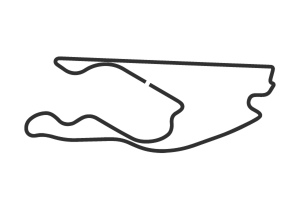Mercedes High Performance Powertrains managing director Hywel Thomas has revealed his surprise at the "pounding" taken by the power units through porpoising.
A technical directive was issued mid-season and a regulation change was implemented for 2023 in a bid to greatly reduce or eradicate the phenomenon.
This followed an Azerbaijan Grand Prix that showcased porpoising at its worst, with the bumpy street surface adding to the problems caused by running at high speeds.
Following that event, Lewis Hamilton was seen clutching his back as he exited the W13 such was the discomfort he endured throughout the race.
Thomas has revealed the power units also suffered.
READ MORE...Wolff compares Mercedes success to "eight Christmas evenings"
"By that sort of period of the season, it was becoming very clear that the bottom of the engines were taking a hell of a pounding," said Thomas.
"When you [team principal, Toto Wolff] came up to Brixworth you saw some of the parts that were off the race engines, and it was quite a surprise to see exactly how hard they were being hit by the ground.
"And you know when you see Lewis and George [Russell] looking a bit uncomfortable getting out of the cars the PUs were doing much the same."
Although some of the hardware in the power units was frozen in March, a complete development halt was introduced on September 1. This will be in place until the new regulations come into force in 2026.
This made Mercedes' task of extracting additional pace all the more difficult after starting the year seemingly behind Red Bull and Ferrari in this area.
"We have described from the PU side how we were trying to add performance throughout the season by small gains at pretty much every event," added Thomas.
"When we came back from Bahrain we said 'How are we going to do this? How are we going to put the performance on the car from our side?' And it was really 'We are going to have to do small gains every weekend'.
"Just every weekend, just keep picking off a little gain and a little gain and a little gain and at the same time don't compromise the reliability and that's what we were seeing.
"We are in some ways a little bit fortunate that you can see some of those numbers on the dyno, you can do the tests on the dyno, you can see it develop a little bit more energy.
"You can say 'Okay, we are taking that to the circuit and it's comforting to be able to watch that and see that working'."
Related










































 Grand Prix De Monaco 2025
Grand Prix De Monaco 2025  Gran Premio de España 2025
Gran Premio de España 2025  Grand Prix du Canada 2025
Grand Prix du Canada 2025  Grand Prix of Austria 2025
Grand Prix of Austria 2025  Grand Prix of Belgium 2025
Grand Prix of Belgium 2025  Grand Prix of Hungary 2025
Grand Prix of Hungary 2025  Grand Prix of Azerbaijan 2025
Grand Prix of Azerbaijan 2025  Grand Prix of Singapore 2025
Grand Prix of Singapore 2025  Gran Premio de la Ciudad de Mexico 2025
Gran Premio de la Ciudad de Mexico 2025  Grande Prêmio de São Paulo 2025
Grande Prêmio de São Paulo 2025  Qatar Grand Prix 2025
Qatar Grand Prix 2025  Grand Prix of Abu Dhabi 2025
Grand Prix of Abu Dhabi 2025 